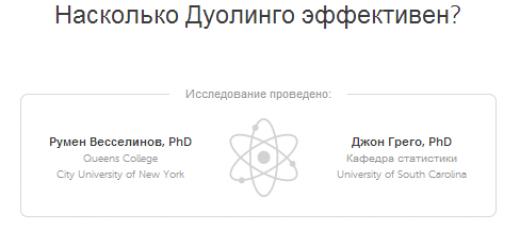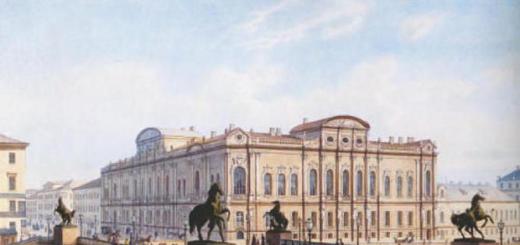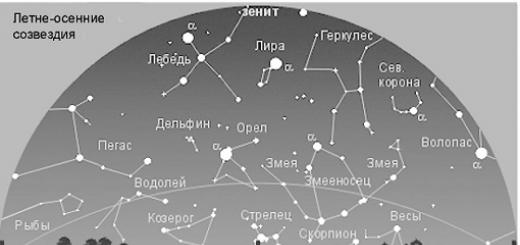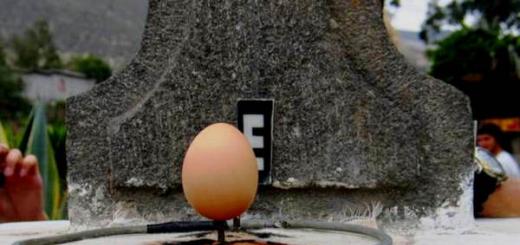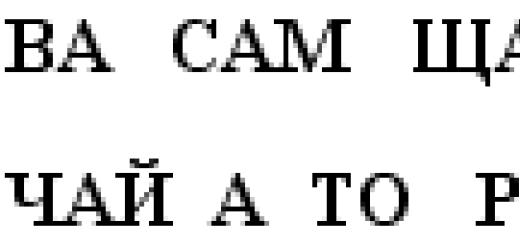"Memorable places of the Patriotic War of 1812 in St. Petersburg"
The victory won by Russia over Napoleonic France in the Patriotic War of 1812 is one of the brightest events in Russian military history, to which many works of art are dedicated. In St. Petersburg, in memory of the glorious victories of the Russian army, a number of architectural and sculptural monuments were erected: the Kazan Cathedral and the Alexander Column, the triumphal Narva Gate and the Arch of the General Staff, monuments to M.I. Kutuzov and M.B. Barclay de Tolly and others.

Narva gates. After the end of the war with Napoleon, the victorious Russian troops in 1814 returned to the capital along the Peterhof road. On the border of the city, which at that time passed near the Obvodny Canal, residents of St. Petersburg met their heroes. Here, according to the project of the architect J. Quarenghi, triumphal gates were erected, which later received the name of Narva. At first they were wooden. But twenty years later the border of the city moved south, and here, according to the project of the architect V.P. Stasov, new Narva Gates were erected. The opening of the triumphal gates took place on August 17, 1834. The renovated monument was built of brick and covered with copper sheets.
The majestic building amazed not only admiring contemporaries. Until now, excursion groups certainly stop at the Narva Gate, which has become one of the most striking architectural monuments of the city.
The inscriptions on the gates list the guards regiments that took part in the hostilities and passed through here when returning from a campaign. Along the edges you can read the names of settlements marked by the victories of Russian weapons. Here are Borodino and Tarutino, Kulm and Leipzig, Maly Yaroslavets and Krasnoye, and, finally, defeated Paris. In the middle part, the inscription stands out: "To the victorious Russian Imperial Guard the grateful Fatherland on August 17, 1834."
If you walk from Nevsky Prospekt along Malaya Morskaya Street past the building of the Main Telegraph, we will get to Palace Square. Here, two majestic monuments of the victory of Russian troops in the Patriotic War of 1812 will appear before us at once.
Alexandrovskaya Column , which has long become one of the architectural symbols of St. Petersburg, rises in the center of Palace Square. The monument was opened on August 30, 1834. The column was conceived as a monument to Alexander I, but since it was during the reign of Alexander that Napoleon was defeated, contemporaries and subsequent generations of Russian people perceived it as a triumphal column erected in honor of the victory in the Patriotic War. The Alexander Column was created by architect O. Montferrand, sculptor B.I. Orlovsky, Russian stonemasons led by a self-taught technician V.I. Yakovlev. A winged figure of the city's guardian angel with a cross is installed on the column. It is noteworthy that the column is not fixed in any way on the pedestal, being kept in a vertical position only due to its own weight. victory people monument glory

triumphal arch Main headquarters - a magnificent monument to the victory of Russian troops in the Patriotic War of 1812, erected in 1819-1829 according to the project of architect K.I. Russia. The height of the arch is 28 meters. It was thrown over the span of Bolshaya Morskaya Street, which is 17 meters. On the planes of the arch are images of combat armor, figures of warriors and flying geniuses of Glory. The arch is crowned by a chariot drawn by six horses. In the chariot, as if overshadowing the Palace Square, the goddess of victory Nike stands to her full height.
According to the models of V.I. Demut-Malinovsky and S.S. Pimenov, sculptural images are minted from sheet copper.
Another monument to the heroes of the Patriotic War of 1812 is the ensemble Kazansky cathedral , opened by a solemn colonnade to Nevsky Prospekt.

The cathedral became tomb remarkable Russian commander, hero of the Patriotic War M.I. Kutuzov . At the end of the Patriotic War of 1812, 107 captured French banners, 93 keys to fortresses and cities, which were taken by the victorious Russian troops, were exhibited in the cathedral.

At present, the Kazan Cathedral has again become an active church and is the cathedral church of the St. Petersburg diocese.

monuments hero commanders 1812 of the year M.I. Kutuzov and M.B. Earthclay de Tolly at the Kazan Cathedral were solemnly opened on December 25, 1837. Bronze figures cast according to the models of the sculptor B.I. Orlovsky (1830-1836), were installed on polished granite pedestals designed by the "singer of Russian military glory" architect V.P. Stasov. Architect K.A. Ton, who in his youth collaborated a lot with Stasov, supervised the installation of monuments. The first of them - to Barclay de Tolly - was, in essence, the embodiment of A.S. Pushkin about the times when posterity will appreciate the merits of this commander (the poem "The Commander").
It is symbolic that the monument to Kutuzov turned out to be installed on a site associated with the name of his father, the outstanding military engineer I.M. Golenishchev-Kutuzov. After all, he is the author of the project of the Ekaterininsky (Griboedov) Canal and the Kazansky Bridge. Thus, both monuments, together with the Kazan Cathedral, form a majestic ensemble that has become one of the symbols of the military glory of the Fatherland, a monument to the great Victory in the Patriotic War of 1812-1814.

Military gallery 1812 of the year one of the galleries Winter Palace. The gallery consists of 332 portraits of Russian generals who participated in the Patriotic War of 1812. The portraits were painted by George Doe and his assistants A.V. Polyakov and Golik.
In addition to the portraits painted by Dou, Polyakov and Golick, the gallery already in the 1830s had large equestrian portraits of Alexander I and his allies - the Prussian King Friedrich Wilhelm III and the Austrian Emperor Franz I. The first two were painted by the Berlin court painter F. Kruger, the third - by the Viennese painter P. Kraft. In Soviet times, the gallery was supplemented with four portraits of palace grenadiers, special troops created in 1827 to guard the home of veterans of the Patriotic War. These portraits were also done by George Doe. Later, the gallery was supplemented by two works by Peter von Hess - "The Battle of Borodino" and "The Retreat of the French across the Berezina River."
The memory of the Patriotic War of 1812 remained not only in music, painting, literature and history books. Glorious events and heroes of battles are immortalized in monuments, monuments and memorial plaques, in the names of squares and streets.
In 2000, the Cathedral of Christ the Savior, destroyed in 1931 by the Bolsheviks, was restored and consecrated in Moscow.
The cathedral was built in 1883 according to the project of K. Ton in gratitude to God for the salvation of Russia in the war with Napoleon and the preservation of eternal memory. The names of those who fell in the war in 1812 are imprinted on the walls of the temple.
In 1912, Russia celebrated the 100th anniversary of the victory of the Patriotic War of 1812. On the voluntary donations of descendants, the museum "On the field of Borodino" was created. For this anniversary, the battle painter F. Roubaud created his famous panorama "Battle of Borodino". At the same time, in 1912, the “Kutuzovskaya hut” was rebuilt in the village of Fili, instead of the one that burned down in 1863, the first museum in Russia in memory of Field Marshal M. I. Golenishchev-Kutuzov.
In 1962, on the year of the 150th anniversary of the Battle of Borodino, next to the hut, the building of the Borodino Battle panorama museum was solemnly opened, where an outstanding work by F. Roubaud was placed. The Panorama Museum "Battle of Borodino" and "Kutuzovskaya Izba" became the center of the historical and architectural ensemble dedicated to the victory in the war of 1812.
Gradually, other monuments to the "heroes of the war of 12 years" began to be erected around. Monument-bust M.I. Kutuzov by the sculptor N. Tomsky was opened in 1958 near the Kutuzovskaya hut. Money for this monument was collected back in 1912, but the First World War did not allow this plan to be realized.
Next to the "Kutuzovskaya Izba" is the Milestone of the Smolensk Road. The most inconspicuous, but the oldest of all monuments, which laid the foundation for the creation of a historical and architectural complex. It was moved here from the Smolensk road in 1883 and installed on the site of the burnt "Kutuzovskaya izba".
In 1973, the second monument to N. Tomsky "Mikhail Illarionovich Kutuzov and the glorious sons of the Russian people who won the Patriotic War of 1812" was opened in front of the museum-panorama. A bronze equestrian statue of Kutuzov rises above a group of 26 figures. Most of the figures have a portrait resemblance to the heroes of the war of 1812. It depicts officers, soldiers who proved themselves in the Battle of Borodino and the militias.
On the right of the pedestal is the composition "Generals": Bagration, Barclay de Tolly, Dokhturov, Tuchkov, Raevsky, Kutaisov, Yermolov, Neverovsky, Likhachev, Konovnitsyn, Platov.
On the left - "Soldiers": Seslavin, Matveev, Pavlov, Zolotov, Alekseev, Ruchkin, Korennoy, Mikhailov, as well as the figures of a hussar in a dolman embroidered with laces and a Cossack in a hat with a hat - two representatives of Russian light cavalry, who were always there during the Patriotic War .
Behind - "Partizans": Figner, Kurin, Davydov, Kozhina, Stulov.
Between the monument to Kutuzov and the Kutuzov hut, there is an obelisk "The mass grave of 300 warriors-heroes of the Patriotic War of 1812". Initially, 300 fallen soldiers were buried at the Dorogomilovsky cemetery, in 1953, in connection with the reconstruction of the area, the grave of the soldiers was moved to the Kutuzovskaya Izba.
The modern complex of the historical and architectural ensemble "Battle of Borodino" at the beginning of Kutuzovsky Prospekt of the capital cannot be imagined without the Arc de Triomphe.

In 1814, a wooden arch was built on Tverskaya Zastava Square for a solemn meeting from a foreign campaign of Russian troops. Later, in 1834, instead of the wooden one, a new arch was installed according to the project of the architect O. Bove, lined with white stone with cast-iron columns and sculptures. Dismantled in 1936 according to the General Plan for the Reconstruction of Moscow in 1935, the arch was kept for 32 years in a branch of the Shchusev Museum of Architecture, on the territory of the Donskoy Monastery. In 1968, next to the Battle of Borodino museum complex on Kutuzovsky Prospekt, the arch was recreated with the replacement of vaulted brick ceilings with reinforced concrete structures.
To the city center along Kutuzovsky Prospekt, not far from the northern pavilion of the Kutuzovskaya metro station, the Monument to the hero of the war of 1812, commander Pyotr Ivanovich Bagration, was opened in 1999. Directly from the monument you can go to the bridge, named after the commander, "Bagration". The metro station of the Filevskaya line "Bagrationovskaya", located north of Kutuzovsky Prospekt, is named after him.

Unfortunately, General Raevsky, one of the main heroes of the Battle of Borodino, has been overlooked by the sculptors. There is not a single monument to him in Moscow.
Poklonnaya Hill stretches along Kutuzovsky Prospekt. Street of 1812 does not start from here, crossing Kutuzovsky Prospekt. Further on Pobedy Square from the avenue, you can turn onto General Yermolov Street, which is adjacent to Neverovsky and Denis Davydov Streets. Barclay Street runs between Kutuzovsky Prospekt and Novozavodskaya Street, and Bagrationovsky Passage is nearby, along which you can get to Tuchkovskaya Street. At the other end of Kutuzovsky Prospekt, between the stations "Kyiv" and "Kutuzovskaya", there is Raevsky Street. Next to it - Platovskaya street and Dokhturovsky lane.
Along Kutuzovsky Prospekt, across the Borodinsky Bridge (formerly Dorogomilovsky, renamed in 1837 in honor of the 25th anniversary of the victory), you can go to Prechistenka to the house of the partisan poet D. Davydov. The ashes of the war hero rest in the cemetery of the Novodevichy Convent, transported there from the estate of Davydov in the village of Upper Maza, Simbirsk province.
The building of the Khamovniki barracks, where the people's militia was formed, has also been preserved in the city.
In the very center of the capital, in the Kremlin, along the facade of the Arsenal, trophy weapons recaptured from the enemy are displayed. After 1812, the Arsenal was supposed to be used as a museum of the Patriotic War, for this, in 1819, 875 captured guns were delivered to it.

In the Georgievsky Hall of the Kremlin, the names of 11,000 holders of the Order of St. George are carved on marble plaques. But there are only four full Knights of St. George (IV degree): Commander-in-Chief of the Russian Army, Field Marshal Prince Mikhail Kutuzov-Smolensky, Field Marshal Count Mikhail Barclay De Tolly, Field Marshal Count Ivan Paskevich-Erivansky, Field Marshal Ivan Dibich-Zabalkansky. And they are all heroes of the Patriotic War of 1812.
Next to the Kremlin is the Alexander Garden. The design of the cast-iron gates and the fence is dedicated to the victory in the war of 1812.
Near the Kremlin is the majestic Manege, built on the occasion of the 5th anniversary of Russia's victory in the Patriotic War, designed by A. A. Betancourt.

In 1997, a monument to the Defenders of the Russian Land was unveiled in Victory Park on Poklonnaya Hill (sculptor A. Bichugov). Symbolizing the connection of generations, it is a collective image of three heroes: on the left - a medieval knight, on the right - a soldier of the Great Patriotic War, and in the center - a grenadier of the Patriotic War of 1812.

Traditionally, the anniversaries of the victory in the Patriotic War of 1812 were celebrated at a high state level. To celebrate the 100th anniversary of the victory in 1910, Nicholas II established a Special Commission of 12 departments. For the 100th and 150th anniversaries, monuments were restored and opened, and solemn events were held.
The 200th anniversary of the victory will be no less grandiose. This date will be widely celebrated in the capital. Throughout the year, scientific conferences and "round tables" will be held in Moscow, historians will re-evaluate the events of 200 years ago, without allowing distortion and falsification of the events of 1812-1814.
Preparations for the holiday began in 2007. The action plan for celebrating the 200th anniversary of Russia's victory in the Patriotic War of 1812 was approved on November 2, 2009 by the Government of Russia. Much has already been done, but much is still in the process of reconstruction and preparation.
On March 6, 2012, after the restoration and renewal of the exposition, the Borodino Battle Panorama Museum was opened, which celebrates its 100th anniversary this year. The opening of the new exposition was the most worthy gift for the 200th anniversary of the victory in the Patriotic War of 1812.
The new exposition has become wider and more accessible. It presents exhibits that have not been exhibited before, unique items of that era. Throughout the museum and in the panoramic hall, where previously there was only the panorama itself, interactive screens and labels appeared, with the help of which you can view individual parts of the panorama.
The museum presents a new word in painting - a reproduction of the painting "Fire in Moscow" (1813) by the artist Smirnov in 3D.
Next in line is the opening of the Kutuzovskaya Izba and the Carriage Shed. The Kutuzov hut has been closed for almost 17 years, since 1995. Now the restoration has already been completed, for its opening it remains to solve only organizational issues.
Currently, the restoration of the Arc de Triomphe is in full swing. Now she is "chained" in scaffolding.
The statue crowning the arch, six horses carrying a chariot with the goddess of Victory Nike, has been dismantled. Two of its components, the statue of Nike and her chariot, have been dismantled. Work on their reconstruction will be carried out in special workshops. But the horses remained in their original place, they will be restored right on the arch, at a height of more than 20 meters above the ground. But all this is not for long. By September 8, the day when the anniversary of the Battle of Borodino is celebrated, all work must be completed.
In 2011, the monument and bust of M.I. Kutuzov in the memorial complex "Battle of Borodino" and a monument to P. Bagration on Kutuzovsky Prospekt.
Description of the presentation on individual slides:
1 slide
Description of the slide:
2 slide

Description of the slide:
Narva triumphal gates In just one month, by the end of July 1814, wooden triumphal Narva gates were built according to the project of Giacomo Quarenghi in the form of a single-span arch topped with a chariot of Glory-Victory with six horses. Vasily Petrovich Stasov became the author of the granite monument project. On the sides of the gate there are inscriptions: Started on August 26, 1827. Opened August 17, 1834. There are also inscriptions about the places of decisive battles, about military formations. The equestrian group crowning the Narva Gates was performed by Pyotr Karlovich Klodt (six horses), Stepan Pimenov (Victory statue) and Vasily Demut-Malinovsky (chariot). The group is a chariot driven by the goddess of victory Nike. In her hands is a palm branch and a laurel wreath - symbols of peace and glory. In the niches between the columns of the Narva Gate there are sculptures of ancient Russian warriors, made according to the models of Pimenov and Demut-Malinovsky. The clothes of the knights are made according to the drawings of the artist F. P. Solntsev, made by him in the Kremlin Armory from authentic samples. Sculptor I. Leppe created winged female figures personifying Glory.
3 slide

Description of the slide:
4 slide

Description of the slide:
Kazan Cathedral Tomb of Mikhail Illarionovich Kutuzov (buried in 1813) Icon of Our Lady of Kazan
5 slide

Description of the slide:
Heroes of the War of 1812 (sculptor - B.I. Orlovsky, 1837) M.I. Kutuzov performed by B.I. Orlovsky is impetuous and spiritual. The commander is in uniform, over which is a cloak. The right hand holds a naked sword, and the left hand holds a field marshal's baton. At the feet are the banners of the defeated Napoleonic troops. Material - northern granite, gives severity to the outlines of the figures. M.B. Barclay de Tolly is a sad and pensive gaze fixed into the distance, his left hand lowered, clutching the marshal's baton.
6 slide

Description of the slide:
During the blockade, both monuments were left in place. It was believed that the commanders raise the morale of the soldiers. Passing by them along Nevsky Prospekt, the military invariably saluted both field marshals.
7 slide

Description of the slide:
The Alexander Column, or the Alexandrian Pillar 1834 The column is crowned by a sculpture by Orlovsky, depicting a gilded angel with the facial features of Emperor Alexander I. The angel holds a cross in his left hand, and raises to the sky with his right. The architect Auguste Montferrand erected an Empire style column in the center of Palace Square by decree of Emperor Nicholas I in memory of the victory of his elder brother Alexander I over Napoleon.
8 slide

Description of the slide:
The height of the Pillar together with the statue is 47.5 m (it is higher than all similar monuments in the world: the Vendome column in Paris, Trajan's column in Rome and Pompey's column in Alexandria). The diameter of the Pillar is 3.66 m. The pedestal of the column is decorated on four sides with bronze bas-reliefs with ornaments from military armor, as well as allegorical images of the victories of Russian weapons. Separate bas-reliefs depict ancient Russian chain mail, shishaks and shields stored in the Armory in Moscow, as well as the helmets of Alexander Nevsky and Yermak. The granite monolith, which served as the basis for the creation of the column, was mined in one of the quarries near Vyborg and transported in 1832 on a barge specially designed for this purpose to St. Petersburg, where it underwent further processing. The forces of 2000 soldiers and 400 workers were involved in the installation of the column in a vertical state on the square. Installed it on a pedestal in just 1 hour 45 minutes. 1250 pine piles were driven under the base of the column. The Pillar of Alexandria is a miracle of engineering calculation - for more than 150 years it has been standing unsecured, held upright solely by the weight of its own weight, which is 600 tons.
9 slide

Kazan Cathedral is one of the largest churches in St. Petersburg. It is an architectural monument of Russian classicism. Built in years by the architect A.N. Voronikhin by decree of Emperor Alexander I to transfer there the revered list of the miraculous icon of the Mother of God of Kazan. Consecrated in 1811. In 1932 it was turned into the Museum of the History of Religion and Atheism. Since 1991, the current temple.




In 1837, in honor of the twenty-fifth anniversary of the defeat of Napoleon, bronze monuments to the famous Russian commanders M.I. Kutuzov and M.B. Barclay de Tolly. The author of the project was the outstanding Russian architect V.P. Stasov, and the figures of the generals themselves were cast according to the models of the outstanding sculptor B.I. Orlovsky. The monuments emphasized the memorial significance of the Kazan Cathedral as a kind of monument to the unfading deeds performed by Russian soldiers in the name of the Fatherland.




Kazan Cathedral is a temple of Russian military glory. In the summer of 1812, before leaving for the active army, the cathedral was visited by Mikhail Illarionovich Kutuzov, appointed to command the Russian army. He fell to the icon of the Kazan Mother of God. The illustrious field marshal found his last refuge here. In 1813, the ashes of His Serene Highness Prince M. I. Kutuzov, who died in the Prussian city of Bunzlau during the Russian Army's Foreign Campaign, were buried in the Kazan Cathedral. The grate enclosing the grave of M. I. Kutuzov and the marble slab on it were made according to the drawing of A. N. Voronikhin himself. In the years, 107 captured French banners and standards of defeated French regiments, 93 keys to fortresses and cities taken by the Russian army were exhibited in the cathedral for inspection.




Military Gallery of 1812 Rossi was guided by the patriotic idea when he created one of the most significant interiors of the Winter Palace, the Military Gallery dedicated to the memory of the heroes of the Patriotic War. It was opened in 1826. 332 portraits of the military leaders of the Russian army who participated in the battles with the Napoleonic troops in the years, on the walls of the gallery. The well-known English painter George Dow was specially invited to perform the paintings, he was assisted by two Russian masters Alexander Polyakov and Vasily Golike.

Among several large full-length images, the portraits of Field Marshals M. I. Kutuzov and M. B. Barclay de Tolly draw special attention. Between them and on the sides in five rows are bust portraits of generals. We know and honor many of them from childhood, among them: P. I. Bagration, A. P. Ermolov, N. N. Raevsky, Decembrist S. G. Volkonsky, Cossack ataman M. I. Platov.

In the poem "Commander" A.S. Pushkin wrote about the gallery: “The Russian tsar has a chamber in his halls: It is not rich in gold, not in velvet; It is not in her that the diamond of the crown is kept behind glass; But from top to bottom, in full circle, With His free and wide brush, She was painted by a swift-eyed artist. There are no country nymphs, no virgin madonnas, No fauns with bowls, no full-breasted wives, No dancing, no hunting, but all cloaks and swords, Yes, faces full of warlike courage. In a tight crowd, the artist placed Here the chiefs of our people's forces, Covered with the glory of a wonderful campaign And the eternal memory of the twelfth year. Often I wander slowly between them, And I look at their familiar images, And I imagine, I hear their militant cries ... "
















The Alexander Column was built from 1829 to 1834, and in 1834 it was inaugurated on Palace Square. The project of the architect Auguste Montferrand The Alexander Column, together with the pedestal, rises above the square to a height of 47.5 meters. Among the monuments of this type, it is the largest in the world.



Monument to the hero of the Patriotic War of 1812 D. V. Davydov:
The monument was erected in 1986 near the house number 27 on Russkaya Street.
Sculptor B. P. Volkov.

Davydov Denis Vasilievich
Russian poet and military writer, hero of the Patriotic War of 1812, one of the initiators of the partisan movement.
DV Davydov was born in Moscow into a noble family. He was brought up among the opposition-minded officers. Davydov was a member of the Arzamas literary circle and was on friendly terms with many Decembrists, but did not believe in the success of their political plans and did not join the secret society.
Denis Davydov gained fame in 1803, when his political fables “Head and Feet”, “River and Mirror”, and the satire “Dream” spread in the lists. For these poems, Davydov was transferred from the cavalry guard regiment in St. Petersburg to a provincial hussar regiment stationed in the Kyiv province. In the new environment, Davydov moved from satire to glorifying the daring hussar customs. The glory of the creator of hussar lyrics was entrenched behind him. In the best poems of Denis Davydov, the patriotic theme is clearly expressed. The main lyrical image of his songs is the "singer-hero", a dashing grunt, a hussar, full of courage and courage.
I love bloody combat
I was born for the royal service!
Saber, vodka, hussar horse,
With you, my age is golden!
In 1807, D. V. Davydov took part in the war with Napoleon as an adjutant to N. I. Bagration, fought in Finland, participated in the Russian-Turkish war of 1809. During the Patriotic War of 1812, he became an outstanding organizer of partisan actions behind enemy lines. The combat deeds of the partisan detachment of Denis Davydov are widely known.
In 1827 he participated in the Russian-Persian war. He was the author of many works on the history of military art (“Meeting with the great Suvorov”, “Diary of partisan actions in 1812”, etc.). In 1821, D. V. Davydov published the book "Experience in the theory of partisan action."
Denis Davydov summed up the results of his poetic activity in 1832 by releasing a collection of poems, provided with a vivid autobiography. He retired with the rank of lieutenant general. Continuing to write poetry, romances, he created the sensational "Modern Song", where he evilly ridiculed the rear military and ostentatious liberalism, fashionable in the noble salons of that time.
On May 10, 1963, in memory of the national hero (partisan) of the Patriotic War of 1812, by the decision of the executive committee of the Vladivostok Soviet of Workers' Deputies, the newly formed street in the valley of the Second River was named Denis Davydov Street. In 1986, at the intersection of Russkaya and Denis Davydov streets, his bust was erected (author - sculptor B.P. Volkov).

Monument to the hero of the Patriotic War of 1812 P. I. Bagration:

The monument was erected near the road ring in the area of the stop "Ring of Bagration"(Borodinskaya street, 90).
Sculptor B. P. Volkov.

Bagration Petr Ivanovich
Russian infantry general, prince.
P. I. Bagration was born in 1765 in the town of Kzilyak, in the family of a colonel from an old Georgian princely family. He began military service in 1782. He served in the Caucasus, took part in the Russian-Turkish war of 1787-1791. and the Polish campaign of 1793-1794.
Under the command of A. V. Suvorov, he made the Italian and Swiss campaigns. In 1799, with the rank of major general, he commanded the vanguard and distinguished himself in all major battles: at Trebia, Novi, during the attack of the St. Gotthard Pass.
During the war with France, as part of the Russian corps commanded by M.I. Kutuzov, he led the rearguard of the Russian army (1805-1806) and distinguished himself at Preussisch-Eylau and Friedland. Commanding a detachment of five thousand, he withstood the onslaught of thirty thousand French near the village of Shengraben, which secured the Russian army.
Participated in the Russian-Swedish war of 1808-1809, where he commanded a division. He became famous by making the famous crossing on the ice of the Gulf of Bothnia. In the spring of 1809 he occupied the Aland Islands.
During the Russian-Turkish war of 1806-1812. from July 1809 to March 1810 he commanded the Moldavian army. In August 1811 he took command of the Podolsk army, and from March 1812 he became commander of the 2nd Western Army, with which he met the beginning of the Patriotic War. During the retreat, he took care of the preservation of the army. More than once, with skillful maneuvers with battles, he led his 2nd Western Army from the blows of the superior forces of the Napoleonic army, successfully connecting with the 1st Western Army of M. B. Barclay de Tolly near Smolensk.
In the battle of Borodino, the 2nd Western Army occupied the left flank of the Russian position, on which Napoleon directed his main attack. In the battle, the army showed exceptional stamina, and its commander P.I. Bagration showed endurance and personal courage. During one of the counter-attacks P. I. Bagration was mortally wounded.
Pyotr Ivanovich died in the village. Sims of the Vladimir province, where he was buried. In 1839, his ashes were transferred and reburied at the Borodino field.
On October 12, 1962, when the 150th anniversary of the Battle of Borodino was celebrated, by decision of the executive committee of the Vladivostok City Council of Workers' Deputies, a new street in the built-up area of the Second River was named Bagration Street. In the late 1980s, a monument to the hero of the Patriotic War of 1812 P.I. Bagration by the sculptor B.P. Volkov was erected on it.
Monument to the Hero of the Patriotic War of 1812 M.I. Kutuzov:

Monument erected near Russian street, 41.
Sculptor N. V. Tomsky.

Kutuzov Mikhail Illarionovich
Russian commander, Field Marshal General, His Serene Highness Prince Smolensky.
M. I. Kutuzov was born on September 5, 1745 in St. Petersburg, in the family of an engineer-lieutenant general. He graduated with honors from the Noble Artillery School and was left with her as a teacher of mathematics. In 1761 he was promoted to warrant officer and appointed commander of a company in the Astrakhan Infantry Regiment. Since 1762 he was adjutant of the Revel Governor-General, in 1764-1765. commanded a detachment in operations against the Polish confederates.
Participated in the Russian-Turkish wars of 1768-1774. and 1778-1791. He was a student and colleague of A. V. Suvorov, participated in the assault on Izmail, in the battles of Babadag and Machin.

